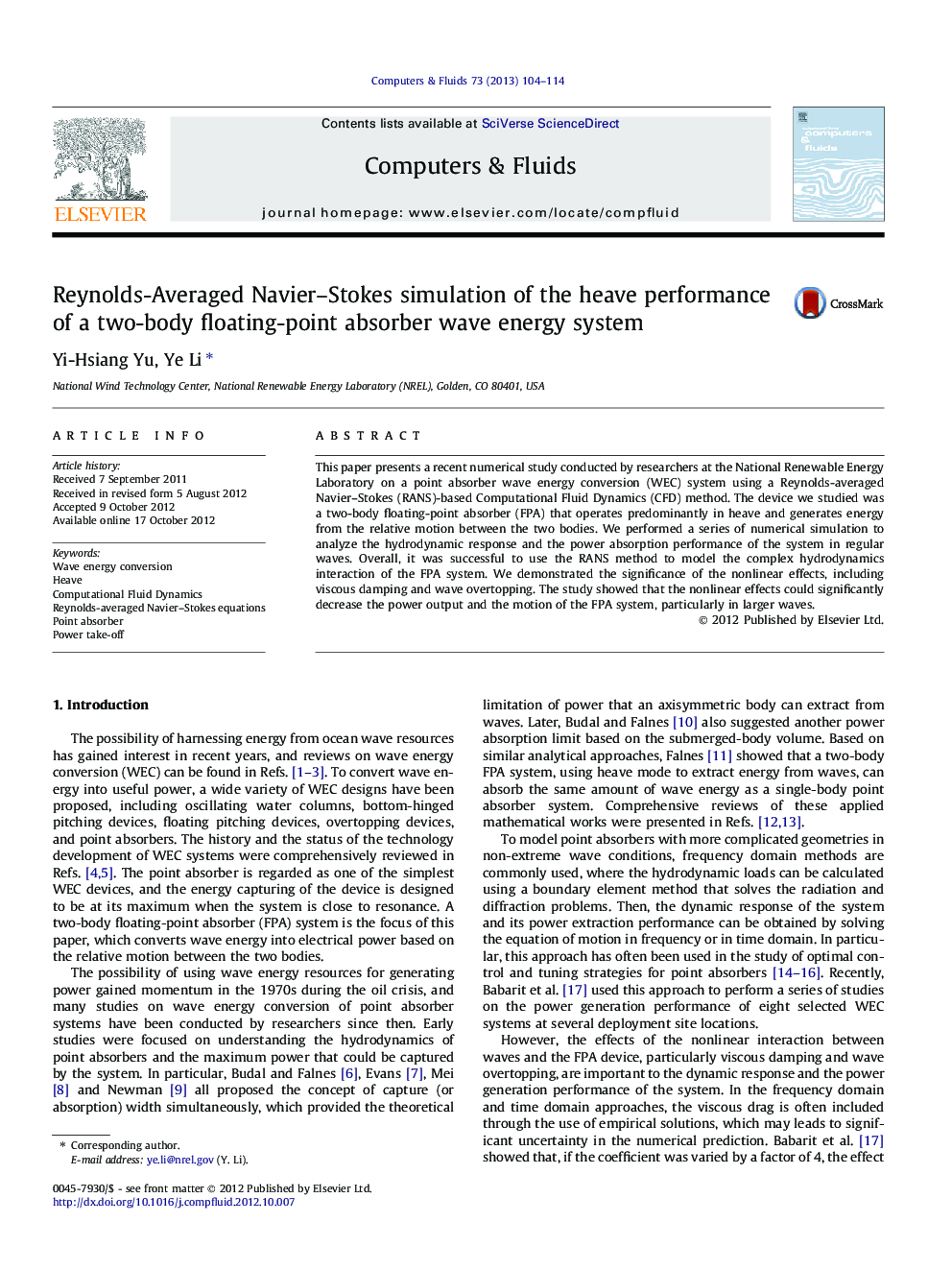| Article ID | Journal | Published Year | Pages | File Type |
|---|---|---|---|---|
| 762293 | Computers & Fluids | 2013 | 11 Pages |
This paper presents a recent numerical study conducted by researchers at the National Renewable Energy Laboratory on a point absorber wave energy conversion (WEC) system using a Reynolds-averaged Navier–Stokes (RANS)-based Computational Fluid Dynamics (CFD) method. The device we studied was a two-body floating-point absorber (FPA) that operates predominantly in heave and generates energy from the relative motion between the two bodies. We performed a series of numerical simulation to analyze the hydrodynamic response and the power absorption performance of the system in regular waves. Overall, it was successful to use the RANS method to model the complex hydrodynamics interaction of the FPA system. We demonstrated the significance of the nonlinear effects, including viscous damping and wave overtopping. The study showed that the nonlinear effects could significantly decrease the power output and the motion of the FPA system, particularly in larger waves.
► Study the hydrodynamic performance of a floating-point absorber wave energy system. ► Analyze the power generation efficiency of the absorber system. ► The study was performed using a Reynolds-averaged Navier–Stokes method. ► The feasible value of the power absorption coefficient was examined. ► Nonlinear effects, including wave-overtopping induced forces, were significant.
